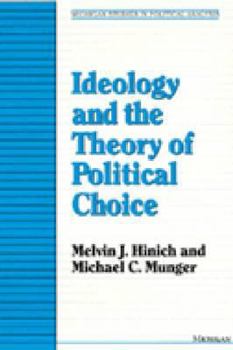Ideology and the Theory of Political Choice
Select Format
Select Condition 
Book Overview
There is no unified theory that can explain both voter choice and where choices come from. Hinich and Munger fill that gap with their model of political communication based on ideology.
Rather than beginning with voters and diffuse, atomistic preferences, Hinich and Munger explore why large groups of voters share preference profiles, why they consider themselves "liberals" or "conservatives." The reasons, they argue, lie in the twin problems of...
Format:Hardcover
Language:English
ISBN:0472101986
ISBN13:9780472101986
Release Date:September 1994
Publisher:University of Michigan Press
Length:280 Pages
Weight:1.50 lbs.
Dimensions:6.0" x 9.0"
Customer Reviews
0 rating





